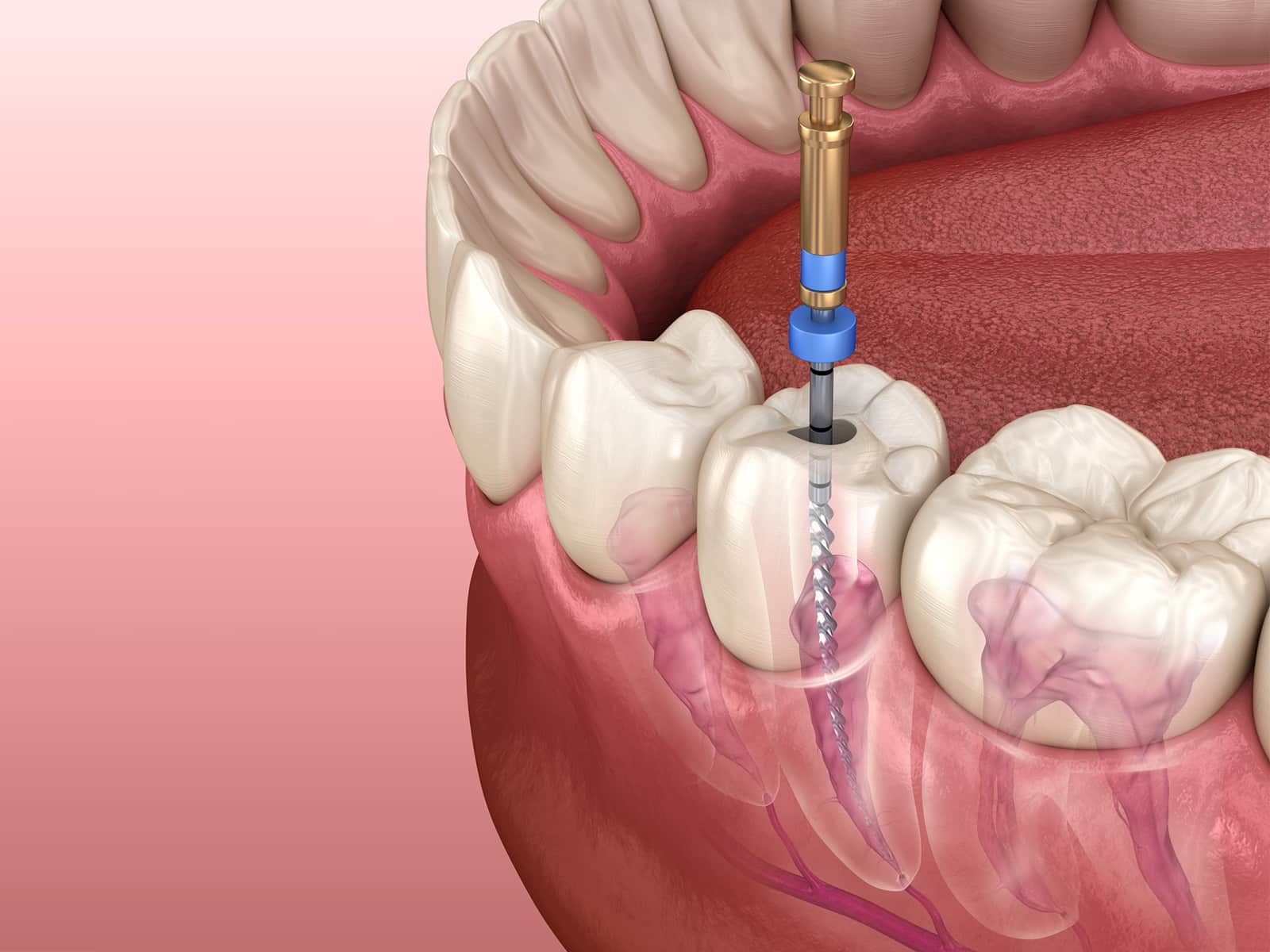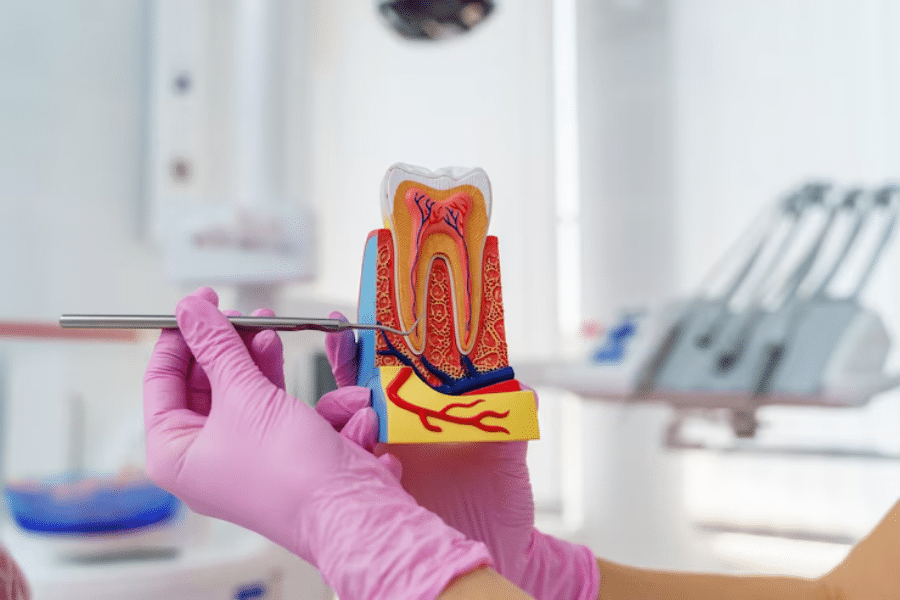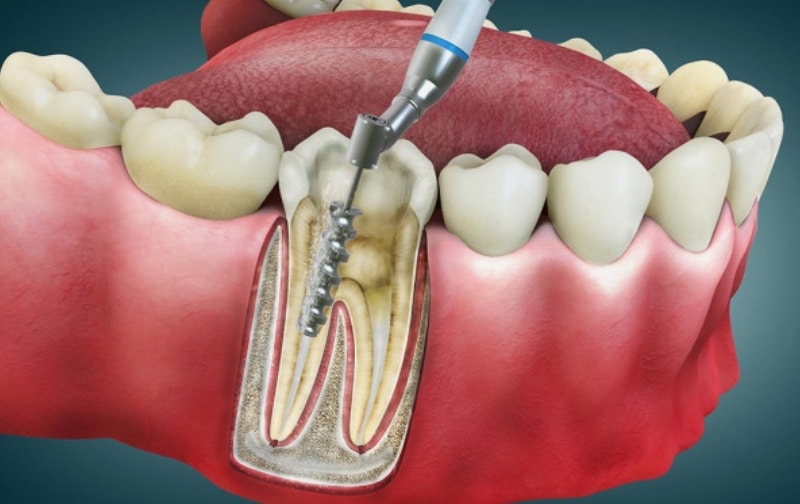
Root canals – two words that might send shivers down the spine for many. Despite being a common dental procedure, the question of how long it takes for a root canal to heal often lingers in the minds of those facing this dental intervention. If you find yourself pondering over the intricacies of root canal recovery, you’re not alone. In this comprehensive guide, we’ll delve into the factors influencing the healing time, essential aftercare measures, and what to expect during this dental journey.
Understanding the Root Canal Process
The root canal process, though commonly associated with dental discomfort, is a vital procedure aimed at salvaging a damaged or infected tooth. The journey towards a root canal typically begins with a comprehensive examination by a dentist. Symptoms like persistent toothache, sensitivity to hot or cold, swelling, or a pimple on the gums may prompt the need for a closer look. X-rays are often employed to assess the extent of damage and determine the necessity of a root canal.
Once the decision for a root canal is made, the dentist administers local anesthesia to numb the affected tooth and surrounding area. This ensures that the patient remains comfortable and pain-free throughout the procedure. With the tooth adequately numbed, the dentist creates an access opening in the crown – the visible part of the tooth. This opening allows access to the pulp chamber and root canals.
Factors Influencing Healing Time
- Extent of Infection: The severity of the infection plays a crucial role in determining the healing time. A minor infection might resolve more quickly than a complex case requiring extensive treatment.
- Tooth Location: The tooth’s location in the mouth can influence healing time. Front teeth generally heal faster than molars due to differences in size and the number of root canals.
- Individual Healing Response: Each person’s body reacts differently to dental procedures. Factors like overall health, immune system strength, and genetics can impact how swiftly the body heals after a root canal.
- Follow-up Care: Adherence to post-treatment care instructions significantly affects healing time. Patients who follow prescribed guidelines for oral hygiene and take prescribed medications are likely to experience a smoother and faster recovery.
The Healing Timeline
Immediate Relief
The relief begins almost immediately after the root canal procedure. This initial sense of comfort is primarily due to the removal of the infected pulp, which was causing pain and discomfort. Patients often find that the acute pain they may have experienced prior to the procedure is significantly diminished or entirely alleviated.
Initial Recovery (1-2 Weeks)
The first one to two weeks following the root canal procedure constitutes the initial recovery phase. During this period, it’s normal to experience mild discomfort or sensitivity, especially as the anesthesia wears off. The body begins its natural healing process, and any residual swelling or inflammation from the procedure starts to subside. Dentists may prescribe pain relievers or antibiotics during this phase to manage pain and prevent infection.
Complete Healing (Several Weeks to Months)
While the initial recovery phase addresses immediate post-procedure discomfort, complete healing of the tissues surrounding the treated tooth is a more prolonged process. The timeframe for complete healing can vary from several weeks to a few months, depending on various factors. The body’s ability to regenerate tissues, the complexity of the root canal procedure, and the individual’s overall health play integral roles in determining the duration of this phase.
Follow-up Appointments
Regular follow-up appointments with the dentist are crucial components of the healing timeline. These appointments, typically scheduled in the weeks and months following the root canal, allow the dentist to monitor the progress of the healing process. X-rays may be taken to ensure that the treated tooth and surrounding structures are healing as expected. Any concerns or issues can be addressed promptly during these check-ups.
Long-Term Monitoring
Beyond the immediate recovery and follow-up appointments, patients can expect their dentist to monitor the treated tooth’s long-term health during routine dental check-ups. This ongoing assessment ensures that the benefits of the root canal, such as the elimination of infection and preservation of the natural tooth, are maintained over time.
Essential Aftercare Tips
Medication Compliance
Adhering to the prescribed medications is fundamental for post-root canal care. Antibiotics, if prescribed, should be taken as directed to prevent or address any lingering infection. Pain relievers, if recommended, can be instrumental in managing post-procedure discomfort. It is crucial to complete the full course of antibiotics, even if symptoms alleviate, to ensure the complete eradication of any remaining bacteria.
Oral Hygiene
Meticulous oral hygiene is paramount during the recovery period. While the treated tooth heals, maintaining a clean and bacteria-free oral environment is essential. Brushing and flossing regularly but gently are crucial components of effective oral care. It’s advisable to use a soft-bristled toothbrush and be cautious around the treated area to avoid irritation.
Avoid Certain Foods
Particularly during the initial recovery phase, it’s wise to be mindful of dietary choices. Hard, crunchy, or excessively hot or cold foods can cause discomfort or disrupt the healing process. Opting for softer, lukewarm foods in the days following the root canal can contribute to a more comfortable recovery.
Long-Term Oral Care
Beyond the immediate recovery phase, patients should prioritize long-term oral health. This includes regular dental check-ups, good oral hygiene practices, and promptly addressing any dental concerns to prevent future issues.
The healing time after a root canal can vary based on several factors, including the extent of infection, tooth location, individual healing response, and follow-up care. While immediate relief is often experienced, complete healing may take weeks to months. By following aftercare tips and attending scheduled follow-ups, patients can contribute to a smoother recovery process. If you find yourself on the verge of a root canal, rest assured that understanding the healing timeline can help you approach the procedure with confidence, knowing that a healthier, pain-free smile awaits you on the other side.


